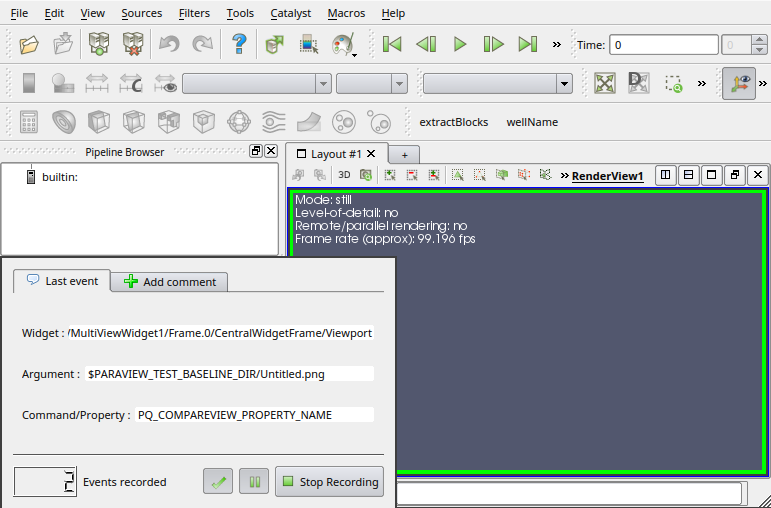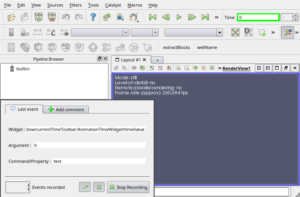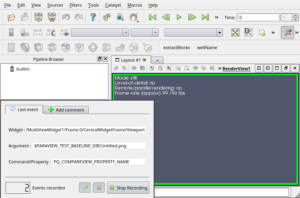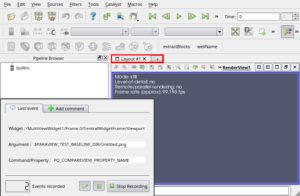New Check Feature in QtTesting, available in ParaView

We have been working for some months to improve QtTesting code and add a new nice Feature to it, called “Check”.
It adds a new button to the QtTesting window, right to the pause button, enabling a user to switch to check mode. When in Check mode, an overlay will be shown under the mouse, highlighting if a specific widget can be checked or not. If a user click on a checkable widget, a Check event will be registered , associated with a certain value. When replaying a test, if a check event is encountered, the actual checked value will be compared to the value stored when recording the test.
The idea is, of course, to allow value checking in xml test in paraview and other QtTesting based test solution.
The new code is fully retro-compatible, and your previously coded translator and player will still work, but some in-house widget may not support check event, showing with a red overlay around them when trying to check them.
Also, we have improved the support for all QAbstractItemView based widget, QTextEdit based widget, and even added a way to do image/screenshot test by clicking on the pqQVTKWidget in ParaView.
Code is available in master, see following merge requests, and should be available in paraview 5.1.
https://github.com/Kitware/QtTesting/pull/22
https://gitlab.kitware.com/paraview/paraview/merge_requests/479
Here, we see an example check of the value contained inside the “TimeStep” widget in paraview.
Here we see an example screenshot check in ParaView
Here we see an example impossible check of the “LayoutTitleBar” widget in ParaView
Acknowledgments
This work was made possible thanks to a contract with CEA, Direction des Applications Militaires Île-de-France (DIF), Bruyères-le-Châtel, 91297 Arpajon, France. We extend special thanks to Claire Guilbaud, Rolan Le Martret and Guenole Harel, for this fruitful collaboration. We are looking forward to continued collaboration with CEA/DIF in this and other areas of scientific visualization.


